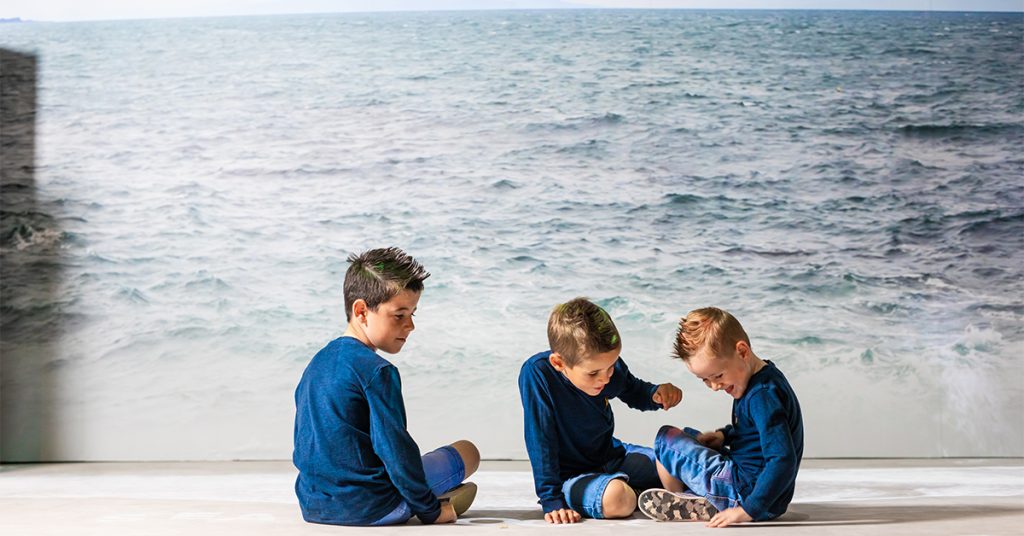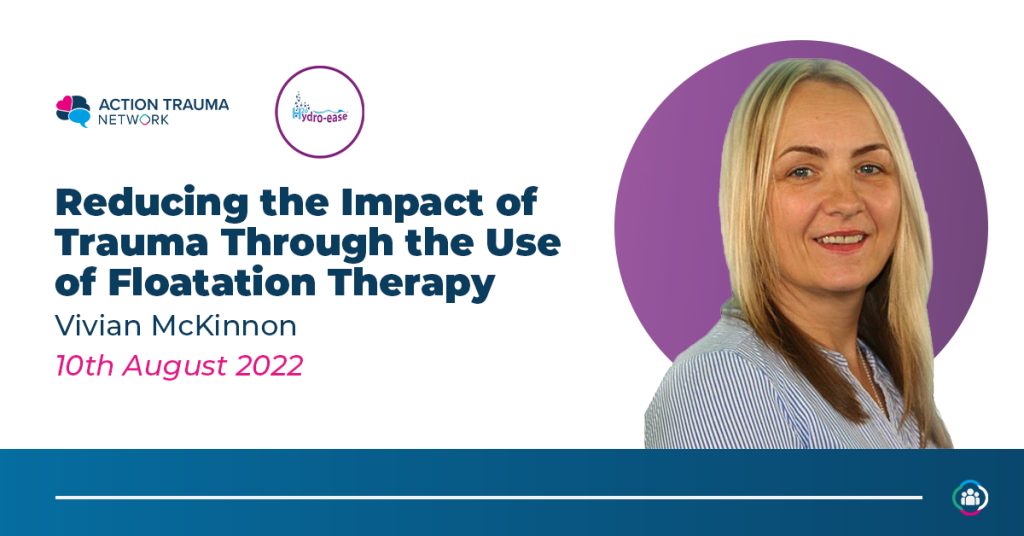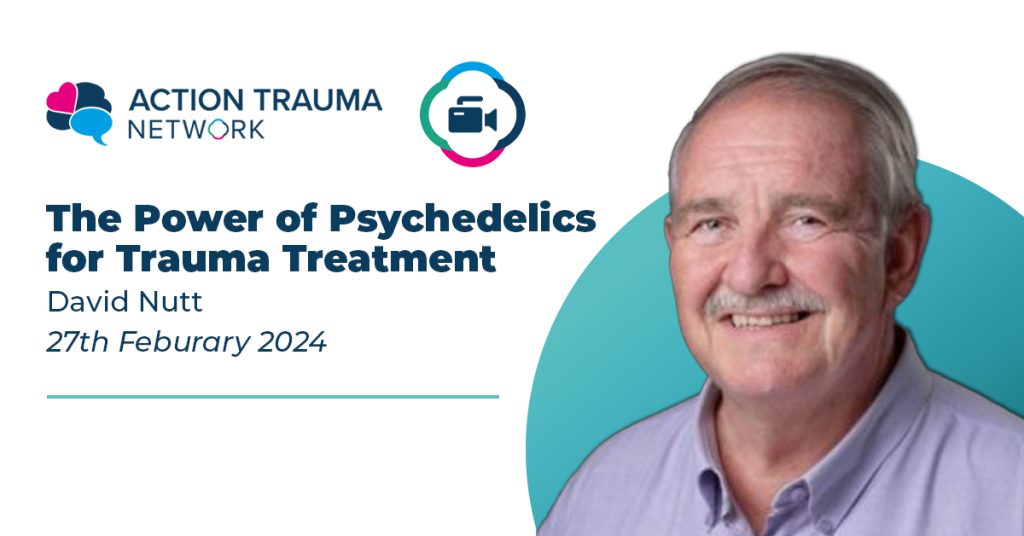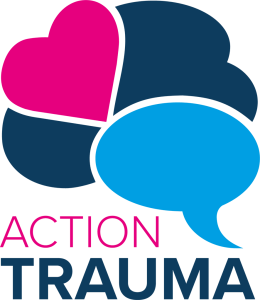The history of Scotlands ACES’s movement | grounded in a focus on relationships

Abstract: As 2021 commences, Scotland finds itself in the midst of a dynamic movement driven by awareness of the science of adverse childhood experiences (ACEs).
That drive comes from unparalleled grassroots interest as well as moves towards reform in public services. This article traces the history of Scotland’s ACEs journey, published, to our knowledge, for the first time in an academic journal. The start of the movement is dated to 2005, when the newly founded Violence Reduction Unit adopted a developmentally informed, public health approach to reducing Scotland’s high rate of violence. In 2017, a national tour of the documentary film Resilience sparked widespread public engagement. It demonstrates that, from the outset, the Scottish movement has been grounded in a focus on relationships. This aligns it with an attachment perspective, posing an interesting contrast with the epidemiological origins of the ACE Study itself and the associated movement that has since emerged in the USA. The significance of this distinction has received insufficient consideration, perhaps because the trajectory of the Scottish ACEs movement has not been apparent. This article provides that narrative and reflects on its theoretical and practical implications. Keywords: attachment, adverse childhood experiences, Scottish ACEs movement, relationships, resilience.
Introduction
As 2021 begins, Scotland finds itself in the midst not only of a global pandemic but also a dynamic ACEs movement. This article traces the history of that movement, under way now for almost two decades. This article highlights the focus on relationships that is a core feature of that movement. Its presence would be easy to overlook or take for granted, but, arguably, it has been key to its success. A relational focus carries both theoretical and practical significance, in that it provides an explanation of the impacts of adverse childhood experiences (ACEs) and identifies actions, at the personal and societal levels, that can be taken to prevent, mitigate, and heal those impacts. A multitude of examples now exist that illustrate how awareness of the science of ACEs has transformed personal lives, professional practice, and institutional policies, across a range of sectors in Scotland. The lessons we have learned can hopefully be of use to other regions engaged in their own ACEs journeys.
I write the article as one individual whose voice has become prominent within this movement. My aim is to convey the Scottish story to those unfamiliar with it. I feel a responsibility in my account to the many others who have engaged in this journey, and I recognise that others might have offered alternative perspectives. I have chosen to frame the account in four phases. They do not run strictly chronologically, but this structure conveys a sense of the diverse developments that occurred over time. Those phases are discernible only in hindsight. What now appear as beginnings felt, at the time, simply like grasping opportunities. There is a lesson even in that.
A public health approach to violence: 2005–2016
The beginning of Scotland’s ACEs journey can most clearly be dated to 2005, with the establishment of the Violence Reduction Unit. Two members of Strathclyde Police, Detective Chief Superintendent John Carnochan and Head of Intelligence Analysis Karyn McCluskey, sought to understand the violence that had plagued Glasgow for decades. The city had been dubbed the “murder capital of Europe”, with rates of knife crime and gang violence at record levels. Carnochan and McCluskey’s growing appreciation of the intersections between poverty, childhood adversity, stress, and intergenerational trauma led them to the startling conclusion that violence should be viewed as a public health issue (Armstrong, 2018). The idea that violence could be approached through a lens other than criminal justice was one that unsettled critics and that was surprising even to them. As Carnochan (Leask, 2015) later commented: “I had never [before] consciously thought about why there was so much violence. I just presumed that’s what it was like and that it was my job to deal with it.”
The work of the World Health Organization (WHO) was essential to their shift in perspective. The WHO’s contention was that violence was not inevitable, but preventable, and that relationships early in life were a key component of that prevention (World Health Organization, 2004). Carnochan and McCluskey’s (2019) attention to the science of early brain development led them to describe experiences of emotional safety in childhood as a “vaccine” against future violence. They
combined this with evidence from other domains, such as gang membership, masculinities, community cohesion and, in time, the adverse childhood experiences study (Felitti et al., 1998). They were further assisted by work in the mental health field in Scotland, which was already arguing that the predominant zero tolerance approach to violence in the workplace should be replaced by a frame that saw it as a function of interpersonal conflict (Paterson et al., 2005). The central theme
drawing these diverse literatures together was the fundamental importance of relationships. They were advocating for “caring people into change” (Geoghegan, 2015). It was a brave stance for anyone affiliated with the police to take, and they weren’t afraid of the controversy it sometimes brought, such as the newspaper headlines when Carnochan (2015) called for funding of more health visitors as
opposed to more police officers. The focus of these two leaders on early relationships meant, in effect, that they were reclaiming Bowlby’s attachment insights, even if they rarely employed that terminology.
Carnochan and McCluskey’s ability to hold their position was bolstered by the appointment of Harry Burns as Chief Medical Officer of Scotland in 2005. Coming from a background as a surgeon and then public health specialist, Burns’ core theme was well-being. He regularly explained attachment theory to audiences, albeit using the language of “stress” rather than Bowlby’s “proximity seeking”. He
wove this into an account of deindustrialisation, community disintegration, poverty, and poor health outcomes, such as shockingly high incidences of heart disease, cancer, and early mortality. He was highlighting the same patterns traced in the ACE Study. Ultimately, Burns was trying to make the case for “connectedness” as the path to human thriving (Hetherington, 2014). That is why he was such an active advocate of initiatives focused on childhood, such as the multi-agency Early Years Collaborative introduced in 2012 (Scottish Government, 2018a), and the ethos of “Getting it right for every child” (GIRFEC) (Scottish Government, 2014), Scotland’s national approach to improving the well-being of children and young people.
The strategy crafted jointly by Burns, McCluskey, and Carnochan was, in part, to foster cross-sector, public conversation about what a public health approach to violence might look like. That was facilitated through events such as the international conference hosted by the Violence Reduction Unit in 2007, based at the Police Training College. The venue held symbolic importance, as did the explicit partnership with the WHO’s Violence Prevention Alliance. The event was supported by Scottish Government and attended by several hundred people, amongst them senior civil servants, ministers, community activists, and myself. One of the invited speakers was Dr Vincent Felitti, speaking about the ACE Study, which had at that point been undertaken a decade previously. Some years later, McCluskey (2018) would say that she wished she had better understood what she was hearing as she
listened to him speaking.
Other speakers were emerging on the national scene in Scotland. Examples include Tina Hendry (McCluskey, 2020), a serving police officer who founded the charity ReAttachment to educate others about the impact of childhood trauma. She had come to understand it as a result of her personal experience as a kinship carer, resulting in her oft-quoted statement: “Poor outcomes are not inevitable”. Alan Sinclair (2018), economist and CEO of the employment organisation The WISE
Group, spoke frequently of the links between experiences in the early years and the development of basic employment skills, such as arriving at work on time and negotiating conflict. James Docherty (2019), mentor with the Violence Reduction Unit, used his personal and professional experience of violence, addiction recovery, and childhood distress to highlight ways that teachers and other adults in his childhood had failed to help because of their interpretations of his “challenging behaviour”. Dr Michael Smith (2018), an associate medical director for mental health services, worked to raise awareness of ACEs especially amongst practitioners and policymakers. His links with the Glasgow Centre for Population Health resulted in an influential seminar delivered by Jane Stevens, founder of the US-based ACEs Connection Network, in April 2016. I had begun providing public lectures on “the science of connection”, drawing on my experience as a developmental psychologist and research scientist at the University of Dundee. The topic of attachment was frequently included, although the traditional terminology of “security and insecurity” was replaced with the metaphoric language of “sabre tooth tigers and teddy bears” (Zeedyk, 2020).
These details are important because, in order to understand the origins of Scotland’s ACEs journey, there is a need to recognise what was fomenting at the time and to appreciate the emerging influence of disparate voices. There was at “the beginning” no specific vision for an ACEs movement. There was, instead, talking and thinking and determination. During the period 2005 to 2017, several hundred
thousand people will have been exposed to the idea that childhood experiences hold long-term consequences. If those experiences are scary or stressful, without adult relationships to provide emotional reassurance, then the consequences are likely to be worrying ones, not only for those individuals but for society as a whole. It was an insight straight out of the pages of Bowlby, even if his name was not common parlance. Later, I would describe this as a period of “tilling the cultural
soil” (Zeedyk, 2019).
Grassroots groundswell: 2017–present
The summer of 2017 became a landmark moment in Scotland’s grassroots awareness of ACEs. The shift stemmed from the documentary film on ACEs, Resilience: The Biology of Stress and the Science of Hope (Redford, 2016). The film had dropped into fertile cultural soil. The Scottish premiere of the film, held on 29 April 2017 in Glasgow, was a sellout. The date had been chosen to follow the London premiere on 27 April, hosted by the film’s UK distributors, Dartmouth Films. This timing allowed the film’s director, James Redford, and representatives of the producers, KPJR Films, to be present at both events (Cocozza, 2017). The Scottish premiere had been conceived and organised as a collaboration between two small organisations already working to educate the public about trauma, ReAttachment (led by Tina Hendry) and connected baby (led by myself). The level of interest was a surprise. Within days of posting notice of the screening on social media, tickets had sold out. Pressure mounted to hold a follow-up screening in Edinburgh. When that too sold out in days, the two teams found themselves involved in a spontaneous, strenuous national tour.
Over the course of two months in the summer 2017, Resilience was shown in twenty-five Scottish communities, with screenings held in cinemas, school gyms, church halls, and community centres. Each screening was followed by a discussion panel with individuals from the local area who could speak in some way to the issue of childhood trauma. There was no coordinated plan and no external funding, merely public demand. By the end of the tour, 2,500 people had seen the film (connected baby, 2018). Many of them returned to their places of work to lobby their employer or their local government representative to purchase a licence for the film so that it could be screened more widely within their community. Health Improvement Scotland (2018) ensured that professionals from a broad range of sectors had opportunities to view the film. A screening held at the Scottish Parliament building in January 2018, attended by a range of politicians, generated interest that would help lead to the establishment of a cross-party working group on ACEs in June 2018 (Scottish Parliament, 2018). It became impossible to keep track of audience numbers, but social media posts suggested that over ensuing months 30,000 or more people were likely to have seen the film. An explosive national conversation was under way. Later, Sara Dodds (2017), adviser on ACEs at the Scottish Government, would acknowledge the crucial contribution of the film in sparking that public conversation. A range of other grassroots initiatives emerged that summer. The ACEs Scotland forum was established on Facebook, attracting 4,000 members within weeks. Community ACEs hubs were set up by individuals keen to spread awareness within local areas. Their activities included public talks, screenings of Resilience, meetings with local politicians, and social media engagement. The community hubs
functioned as a network of support for one another, although it is important to note that the network was not formalised in any way. Each hub emerged and operated independently, inspired by their awareness of activity in other communities. Some hubs were led by individuals with professional connections (e.g. teachers, social workers, public health officers) and others by those whose interest was more personal (e.g. parents, individuals with lived experience of trauma). NHS Health Scotland gave support and advice wherever needed. A survey in 2020 revealed that thirty-five community hubs were operating in some capacity across the country (Hetherington, 2020).
One of the organisations inspired by this grassroots activity was TIGERS Ltd, under the leadership of Pauline Scott. TIGERS (Training Initiatives Generating Effective Results Scotland; www.tigersltd.co.uk) delivers apprenticeships to young people, across four sectors: construction, early years, business administration, and information technology. Scott was already familiar with attachment theory, due to her involvement with the early years sector, but her rapidly deepening understanding of the long-term consequences of childhood stress led her to reconceive the framework for her whole organisation. She shifted the primary focus from training in industry skills to nurturing emotional intelligence, arguing that TIGERS’ core business was developing the potential of young people. The fact that TIGERS identifies as a commercial enterprise made Scott’s actions unusual, especially when
she began working to disseminate ACE awareness within the business sector. Her experience was that most business leaders had absolutely no awareness of the impacts of childhood trauma or the fact that many of their employees would be carrying them. She believed that the example set by her team had the potential to change that.
In 2018 and 2019, the teams at TIGERS and connected baby came together to host two major ACEs events, each of which attracted around 2,000 attendees. The 2018 conference had a bold title: “Making Scotland the World’s First ACE-Aware Nation”. The question underpinning the event was how it might be possible to help every citizen of Scotland to become aware of the long-term impacts of childhood
trauma, as a means of driving culture change. They were instinctively following the relational path laid down earlier by McCluskey, Carnochan, and Burns. They too were asking: What kind of nation did Scotland want to be? What was the place of connection and caring in our collective identity? The event was filled with speakers who could address those themes. The science of ACEs was, in a sense, secondary. It became a means of addressing those questions. The event asked: could we become a nation that paid closer attention to children’s distress and, in the process, solve many of our enduring societal problems? All the conference materials were emblazoned with what became a lasting strapline: “Believing in the transformative power of compassion”. In the delivery of that event, the collaborative initiative known as ACE-Aware Scotland was born, coordinated by TIGERS and connected baby.
What was it that had brought about such an unusually large gathering? Although a multitude of organisations within the public and charitable sectors were already working diligently to reduce childhood suffering in Scotland, an event of this size, with 2,000 people amassed in a single room to address childhood suffering, was unique. Its appeal can arguably be attributed to the impact of the film Resilience.
The invited keynote speaker was Dr Nadine Burke Harris, the leading global ACEs advocate, later to be named California’s first Surgeon General. There was great anticipation in the crowd at the opportunity to hear her speak in person. That excitement would not have existed had the public not first come to “know” her through her passionate contributions to the film Resilience. She brought scientific
depth to the sense of possibility that was burgeoning across the country. In June 2019, a second major ACEs event was held, this time featuring the keynote speaker Dr Gabor Maté. Once again, the focus was on compassion, the healing nature of relationships, and the power of hope. The title “ACEs to assets: fostering resilience in a stressed culture” was intended to convey the message that emotional wounds can become a strength, if the pain that caused those wounds is not left unresolved. It was made clear that the conference had been the vision of two trauma survivors, James Docherty and Kim McGuigan, each of whom shared some of their personal story from the stage. They hoped the event would deepen and extend the core ACE-aware message of relationships, inclusion, and healing.
Their contributions helped the public to understand the intention of the event and signalled that voices of lived experience occupy a core place in ACE-Aware Scotland’s values. Those voices are too often excluded from society and the formal systems delivering services.
In 2020, with the country in a series of lockdowns due to Covid-19, ACE-Aware Scotland pursued a different strategy to reach the public. A monthly series of high-level conversations was organised. They were free and available online for anyone to attend from anywhere in the world. They brought to the public leading speakers on provocative topics at the heart of the international ACEs movement.
Where do human rights sit within an ACEs agenda? How can the stresses induced by poverty and inequality be addressed? How important is the language chosen to talk about human suffering? What responsibility do employers in the private sector carry for becoming trauma-informed? Why does Scotland continue to have the highest rate of drug deaths in Europe? These are questions familiar to academics and policymakers, but too often the public does not have access to such conversations. They become the recipients of others’ decisions. One aim of ACE-Aware Scotland events has been to strengthen people’s beliefs that they too can be leaders. They can drive change in their communities.
ACE-Aware Scotland sought from the beginning to disseminate their work as widely as possible. Digital resources were created, with videos of all major presentations made freely available on a YouTube channel (ACE-Aware Scotland, 2018). These were supplemented with an interview series “Stories of resilience”, in which individuals from a range of sectors told stories about how ACE-awareness had changed their professional practice or personal lives. At the time of writing this piece, the YouTube channel contains almost 100 videos, uploaded over a three-year period, with the total viewing figure approaching 335,000. This figure demonstrates the level of public hunger for this information.
The expansion of the movement brought more debate. Critiques were advanced on a range of issues, including: limitations of the ACEs model; the risk of individualism resulting from an emphasis on biology; insufficient attention to poverty and structural inequality; confusion in terminology; methodological and ethical problems of ACEs scoring and screening; gender and class stereotyping; and suspicions about the motivations of ACEs activists (e.g. Barrett, 2018; Davidson et al., 2020;
Kelly & Zeedyk, 2019; Marshall, 2019). The critiques were published in the mainstream press, in academic and professional journals, on social media, and in specially organised events. Although the tone sometimes became personalised and accusatory, the debate has largely served to push people to think more deeply about the core question: what needs to happen to enable Scotland to get better at recognising and addressing the distress carried by so many children and adults? The international impact of Scotland’s grassroots efforts is not easily apparent, thus briefly tracing it is useful. The organisation Connected for Life, based in Northern Ireland, watched the summer success of the Scottish Resilience tour and fashioned a similar tour for their communities in the autumn of 2017, culminating with the first ever ACEs conference in Northern Ireland in November 2017 (Connected for Life, 2018). Individuals from throughout the UK (and beyond) attended the major events of 2018 and 2019, returning to their communities determined to find ways to drive public conversation. The Dutch group ACE Aware Netherlands (www.aceaware.nl) was founded in 2020, inspired directly by developments they witnessed in Scotland. The London ACEs Hub (www.londonaceshub.org), also founded in 2020, has stated they too drew inspiration from Scotland’s example. Individuals from Australia, New Zealand, Turkey, Portugal, Canada, and America are amongst those who regularly tune in to broadcasts or stream video resources. None of this was anticipated when a Glasgow venue was first booked in 2017 for an unknown film called Resilience. We have travelled a long way in a short
time.
Government and public sector activity: 2016–present
The efforts of the Scottish Government and affiliated public bodies to engage with the science of ACEs have also been extensive. In 2016, the seminal report “Polishing the diamonds” (Couper & Mackie, 2016) was commissioned on behalf of the Directors of Public Health and published by NHS Health Scotland (now Public Health Scotland, as of 2020). The report advocated a public health approach to
addressing childhood adversity and trauma. It resulted in a national conference of 200 delegates in November 2016 (NHS Health Scotland, 2017), chaired by Sir Michael Marmot, author of “The Marmot review” (Marmot et al., 2010), which identified next steps. One of these was establishing a Scottish ACEs Hub, a multisector advisory group that could spread awareness and collect best practice
responses. The conference became a call to action to ensure that all professional sectors were trauma informed. This goal was assisted by the development of the national trauma training programme, overseen by NHS Education for Scotland (2016) and funded by Scottish Government, which aimed to implement trauma informed practice across the whole of the Scottish workforce, regardless of
sector. All of these efforts are classic examples of a public health approach, which seeks to prevent and respond to the causes of ill health and inequality. Public Health Scotland’s position is that ACEs should be seen within the wider context of adversity that children face, in particular poverty, inequality, and exclusion. One of the key strengths of the ACEs research and terminology has been, in their view, that
it provides a bridge between professions, “a shared language about how early life can impact on later social, health and economic life outcomes” (Hetherington, 2020,p. 12).
The First Minister for Scotland (Nicola Sturgeon) first viewed the film Resilience in September 2017, at a screening organised by the peer mentoring group Women 1st, supported by children’s charity Children 1st (Glasgow, 2017). As part of that event, attended by approximately 300 people, Nicola Sturgeon chaired a panel discussion, in her role as a constituency MSP, in which she reaffirmed her commitment to addressing childhood adversity. In March 2018, a collaborative event was hosted by the Deputy First Minister to reflect on progress being made in regard to ACEs. It was attended by a wide range of Government ministers and officials, as well as a range of individuals interested in progressing activity focused on ACEs, including ambassadors for the Year of Young People (Scottish Government, 2018b). Specific reference to ACEs has been made in the Government’s formal Programme for Government for each of the years 2017, 2018, and 2019 (Scottish Government, 2017, 2018c, 2019). Notably, each of these documents features images of children on the cover, which signals a sense of hope for many observers.
The Government continues to work on the ACEs agenda (Scottish Government, 2020a), with one of the most recent developments being publication of the first data set on the prevalence of ACEs in the adult Scottish population (Scottish Government, 2020b). Public bodies, at both the local and national levels, have taken action that draws on this national conversation. For example, NHS Highland chose to focus their 2018 Annual Report on the topic of ACEs (NHS Highland, 2018). The report was shared
more widely amongst the public than would usually be the case for reports from a public health agency. Police Scotland embarked on training officers in trauma, with the Ayrshire Division first to show Resilience to all 850 of its officers in 2018 (Alderson, 2018). Community Justice Scotland focused extensively in their 2018 Annual Report on the impact of ACEs in relation to justice (Community Justice Scotland, 2018). The Scottish Prison Service included questions about ACEs in
their 2017 Prisoner Survey (Scottish Prison Service, 2017). Local authorities such as Argyll and Bute Council (2019) and Highland Council (2018) held cross-sector events, reminiscent of those featured in Resilience, designed to strengthen integration amongst services serving children and families. The Independent Care Review, a four-year review initiated in 2016 to undertake a root and branch investigation of why Scotland’s care system seems to fail so many of its children, drew on the knowledge of trauma to make sense of what it was uncovering (Duncan, 2020).
When Education Scotland (2020a) released their new practice guidance for the early years sector in 2020, entitled “Realising the ambition”, the warmly welcomed document contained explicit references to both adverse childhood experiences and to attachment, including within the Foreword written by the Minister for Children and Young People. Other work by Education Scotland (2018, 2020b) directly
addresses questions about how ACEs could be addressed within the school environment, particularly by putting relationships and compassion at the heart of culture and practice. It would be impossible to provide a comprehensive account of all the instances in which the language and insights of ACEs and trauma have been applied within Scotland’s public sector services. My aim has been to give a sense of the breadth of its reach within a short time. Our nation remains a long way from achieving system transformation, where relationships become the standard lens through which policy is designed and implemented. However, for a country where it has sometimes been said that “we tolerate our children more than we like them” (Sinclair, 2018), the change under way is very encouraging.
Changing professional practices: 2017–present
The story of the Scottish ACEs movement would be incomplete without highlighting the way in which professional practices are shifting spontaneously. The increase in relational practices has been so broad that “practical applications” can now be regarded as one key aspect of the Scottish movement’s character. Understanding trauma through a relational lens gives individuals and organisations the confidence to drive change themselves, without waiting for formal policy decisions. These are
the “early adopters” described in innovation theory (Rogers, 1962), whose leadership is crucial to driving wider culture change. I will limit my considerations to three sectors: education, health, and law.
A striking number of primary and secondary schools are developing traumainformed practices. The enthusiasm is so high that when an independent learning festival was organised at Portobello High School in 2018, under the title “Meeting the needs of all our young people? ACEs realities and responses”, its 300 seats sold out (McKay, 2018). The Portobello Learning Festival is already regarded as a regular fixture in the Scottish educational calendar. Clydebank High’s efforts to develop a whole school culture of stress awareness has resulted in their expertise being sought internationally (Diamond, 2020). Boclair Academy responded to student stress during the Covid-19 pandemic by instituting a “toast break”, the apparent simplicity of which is belied by the trauma-informed lens they use to explain it (Morgan, 2020). Bainsford Primary revoked their behaviour policy and replaced it with a relationship agreement (McCafferty, 2019). Pitteuchar East Primary replaced the common phrase of “challenging behaviour” with that of “distressed behaviour” (Knussen, 2019), a linguistic shift has since been spreading across schools in Scotland (Foster, 2020). A partnership of three primary schools in West Lothian created what they call “teddy bear policies” as a means of boosting children’s self-regulatory capacities (ACE Bear Schools, 2020), resulting in one of their teddies being named amongst Scotland’s Top Ten Educational People of the Year in 2019 (Hepburn, 2019). “Furball’s presence [amongst these ten people] symbolises changing attitudes to adverse childhood experiences in Scotland”. These practice changes have resulted from the combination of a relational policy
context and grassroots confidence. In health, there has been a very intentional commitment within various systems and regions to adopt a trauma-informed approach. For example, in 2018, the board members of Ayrshire and Arran NHS (2018) confirmed their plans to take forward ACEs work across the whole of the health board. The paper proposing that strategy was entitled “The state of child health: adversity is not destiny: population lens on adverse childhood experiences”. The progress report one year later (Ayrshire and Arran NHS Board, 2019) confirmed more than fifty screenings of the
film Resilience had taken place, with the evidence concerning the long-term impacts of adversity increasingly recognised as “compelling” by staff and within services.
The report urged continued progress toward organisation-wide culture change in the “underlying assumptions” that are often made about patients and towards collective leadership that acknowledges “trauma is everyone’s business”. Another example of changes within the health sector relates to the training of nurses. All institutions of higher education providing nursing education in Scotland have
committed to prioritising trauma-informed models of care (Gilliver, 2018). This is a national approach, across all forms of nursing. The University of Stirling has been a leader in this regard since 2013, with its relational model for training mental health nurses now regarded as best practice (Young et al., 2019). When one listens to nursing students extemporaneously using language embedded in attachment principles and ACE awareness, the profound impact of this paradigm shift becomes
clear (University of Stirling, 2017). “Hearing a person’s story matters so much. To ‘do no harm’, you must know harm”.
Changes in the Scottish legal landscape show a similar pattern. In 2021, a group of four lawyers based in separate law practices, specialising in criminal defence, family law, and immigration, combined forces to establish the group Trauma Aware Lawyers in Scotland (Rutherford & Bone, 2021). They were motivated by the conviction that lawyers and courts need a better understanding of ACEs. One of
their members, Iain Smith, was named Lawyer of the Year in the 2020 Scottish Legal Awards for his efforts (Cameron, 2020). Another, Nadine Martin, worked with her firm Harper Macleod in 2018 to host a screening of Resilience for practising lawyers (Martin, 2018). A growing number of Scottish solicitors now seek to have reports on childhood trauma submitted as part of a defence case. The Scottish Sentencing Council is currently reviewing sentencing guidelines and is consulting on how best
to take account of contemporary science on brain development, including under conditions of toxic stress (O’Rourke et al., 2020). Community Justice Scotland, established in 2016, with Karyn McCluskey as CEO, has played an influential role in shifting the Scottish justice landscape, using scientific evidence about human development to argue for “smart justice” as a counter to criticisms about the risk of “soft justice” (McCluskey, 2017). Such discourse has made it possible for Iain Smith
(2019) to talk with confidence about the propriety of Scottish judges “presiding with kindness”. While these ideas may initially sound counter-intuitive, the science of ACEs helps sceptics to see how relational approaches can play a role in reducing crime. It becomes clear that the justice system will remain unjust until it takesaccount of childhood trauma.
Professional practices such as these offer vivid illustrations of the success of the Scottish ACEs movement. It is not at all unusual to overhear people quoting one particular line from the film Resilience as an affirmation of what is happening. “If we can get the science into the hands of the general population, they will invent very wise actions” (Redford, 2016).
ACEs through an attachment lens
The challenge of providing a history is deciding which details to include and which to omit. My aim has been to describe the broad groundswell that has swept the Scottish public since the 2017 Resilience tour and to place that in the context of the decade that preceded it. The most important insight is the relational focus that has been present from the outset. That relational grounding matters because it speaks directly to current criticism of the ACEs model. Commentators such as Perry (e.g. Hambrick et al., 2019; Perry, 2018) and Gold (2017) are concerned that the ACEs account is insufficiently
relationally informed. While it may work as epidemiology, they see it as inadequate developmental theory. An ACE score is regarded as too simplistic. It decontextualises events from a child’s wider environment and life experiences, in particular the presence of relationships that can buffer against toxic stress, as well as the developmental timing of the events. That gap leaves it unable to account for
variance in the way that adverse experiences affect individuals, and they regard this as a significant theoretical flaw.
How does that perspective change when the ACEs account is situated not simply within its epidemiological origins of 1998, but within an attachment framework stretching back to the 1930s? Partridge (2021) has made this case, pointing out that Bowlby was the first to use the phrase “adverse childhood experiences” in the1980s, more than a decade before Felitti and Anda also chose it. Partridge (2019, p. 113) argues that “if Bowlby had lived a little longer, he would not have been surprised by [their] discovery and would have welcomed it”. The link between the two frames can already be found in the empirical literature, such as reflections by Smith and colleagues (2016) on the causes of excess mortality in Scotland. “The relationship between the experience of adversity and attachment style is particularly important, since each may influence the other”. I believe the majority of those engaged with the Scottish ACEs movement, either professionally or personally,intuitively view ACEs through an attachment lens, whether or not they articulate it in this way. It is certainly the view I hold, as a developmental psychologist. Scotland’s relationally informed ACES movement is valuable because it demonstrates the viability of an ACEs approach that is both theoretically rich and practically useful. It is unsurprising that this theoretical depth has gone unexplored at the grassroots level, given that such nuances are difficult to unpack in boisterous public debates. I hope space for that can be created soon, as it would yield at least three benefits. First, it would shine a light on little-recognised differences between the orientations of the Scottish movement (i.e. relational) and the American ACEs
movement (i.e. epidemiological). Second, it would disentangle tensions around ACEs screening, which Harris has implemented in California (Underwood, 2020), but which Scottish public health officials have argued against (Public Health Scotland, 2021). Finally, it would speak to the mistaken belief that an ACEs narrative suggests definitive links between childhood trauma and adult outcomes. That has been consistently countered within the Scottish ACEs narrative, as reflected not only in policy statements, but in the quote that has become a legacy of Tina Hendry’s activism in Scotland. It bears repeating: “Poor outcomes are not inevitable”. After Hendry’s untimely death in 2020 (McCluskey, 2020), badges with that quote were distributed at her funeral to hundreds of her supporters. This
serves as yet another illustration of the potency of the culture change under way in Scotland.
Scotland holds other historic gems that may help in bridging the gap between ACEs and attachment theory. John Bowlby is buried on the Isle of Skye, where he spent much loved summers with his family. James Robertson, whose work between 1950 and 1980 changed hospital policies so that children no longer suffered by being separated from parents, was born in Rutherglen, just outside Glasgow. The psychoanalytic theorists Ian Suttie and Ronald Fairbairn, unknown to the general
public but essential to the development of Bowlby’s thinking about infant experience, were born and based in Scotland. The American researchers who first developed the ACEs model, and the American activists who have done so much to promote it, may be largely unaware of this relevant British history. The Scottish ACEs movement has deep roots. There is more for its activists to build on than
many yet realise.
Conclusion
Our country faces many challenges. We are a long way from being an ACE-aware nation, where all five million of our citizens fully appreciate that the way children are treated leaves a biological impact on the way they develop. It is still too easy to create divisive narratives of exclusion, with trauma constructed as something that happens to “other people over there”, rather than something that unites us as human beings. Too many people continue to feel—and to be—unheard, isolated, excluded. The Covid-19 pandemic will have increased the frequency of ACEs. This information is needed now more than ever. That is why the determined sense of hope within the Scottish movement is cherished. In her keynote speech at the ACE Aware Nation conference, McCluskey (2018) reflected on the many hills that had to be climbed after she and Carnochan first suggested that loving babies could help to cut crime. She quoted the words of philosopher Adam Smith, who shaped Scotland’s Enlightenment of the eighteenth century. “No society can surely be flourishing and happy, of which the greater part of the members are poor and miserable”. She described this era as a new Enlightenment, predicting that “in ten years’ time, people will hold Scotland up and say, ‘Look what they did’”. It is, though, the reflection provided by mental health specialist Brodie Paterson (2021) that perhaps provides the most poetic account of the Scottish movement’s success:
The philosopher Foucault suggests we should think of history as a series of happenings, sometimes quick, sometimes slow, sometimes happening over generations. Particular combinations of events create the conditions of possibility without which future events cannot happen. This is, I think, the ACEs movement in Scotland. Our mental health team knew about the ACE Study from very early on, but despite considerable effort, could gain no traction in mainstreaming the issues. It took the development of an ACE community to do that. The ACEs framework has given Scotland a shared language for talking not only about the distress of trauma, but also about the power of relationships.
Acknowledgements
My thanks go to the following individuals, all of whom have been involved in Scotland’s ACEs movement, for comments on earlier drafts of this article: Sally Amor, Adam Burley, David Cameron, John Carnochan, James Docherty, Sara Dodds, Mary Glasgow, Graham Goulden, Katy Hetherington, Pete Kinnear, Fiona Larkin, Karyn McCluskey, Simon Partridge, Brodie Paterson, Gary Robinson,
Pauline Scott, Iain Smith, and Jennie Young.
References
ACE-Aware Scotland (2018). Making Scotland the world’s first ACE-aware nation.
https://www.youtube.com/channel/UCn-a9Vev9DutpqDMPXS3qAw (last accessed 15
January 2021).
ACE Bear Schools (2020). Tigers & Teddies live! Trauma-informed primary schools (video
series from connected baby). https://www.youtube.com/watch?v=KUCnBmGXeKQ (last
accessed 15 January 2021).
Alderson, R. (2018). Ayrshire policy play ACE card in drive to reduce crime. BBC News.
https://www.bbc.co.uk/news/uk-scotland-45631525 (last accessed 15 January 2021).
Argyll & Bute Council (2019). Developing a trauma informed children’s services workforce
in Argyll and Bute – Conference report, 11 December. https://www.argyll-bute.gov.uk/
developing-trauma-informed-workforce (last accessed 15 January 2021).
Armstrong, S. (2018). How London can solve its violent crime problem by copying Glasgow.
Wired, 28 December. https://www.wired.co.uk/article/glasgow-crime (last accessed
15 January 2021).
Ayrshire and Arran NHS Board (2018). The state of child health: adversity is not destiny:
population lens on adverse childhood experiences, 26 March. https://www.southayrshire.gov.uk/health-social-care-partnership/documents/item%2015%20br%20-%20
adversity%20is%20not%20destiny%20ijb%202018%2009%2012.pdf (last accessed 15
January 2021).
Ayrshire and Arran NHS Board (2019). The state of child health: adversity is not destiny:
developing a trauma-informed approach across Ayrshire and Arran, 7 October. https://
www.nhsaaa.net/media/8097/20191007bmp14.pdf (last accessed 15 January 2021).
Barrett, W. (2018). Why I worry about the ACE-aware movement’s impact. Times Educational
Supplement Scotland, 9 October. https://www.tes.com/news/why-i-worry-about-aceaware-movements-impact (last accessed 15 January 2021).
Cameron, G. (2020). Top award for criminal defence expert Iain Smith. The Times,
5 November. https://www.thetimes.co.uk/article/top-award-for-criminal-defenceexpert-iain-smith-qcczdfdk5 (last accessed 15 January 2021).
Carnochan, J. (2015). Conviction: Violence, Culture and a Shared Public Service Agenda.
Glasgow: CCWB Press.
Carnochan, J., & McCluskey, K. (2019). The origins of the Scottish Violence Reduction
Unit(video from connected baby). https://www.youtube.com/watch?v=UhFDsONaA5Y
(viewed 15 January 2021).
Cocozza, P. (2017). How childhood stress can knock 20 years off your life. The Guardian,
29 April. https://www.theguardian.com/lifeandstyle/2017/apr/29/how-bad-parentingcan-knock-20-years-off-your-life (last accessed 15 January 2021).
Community Justice Scotland (2018). Community justice outcome activity across Scotland.
Annual Report 2018–2019. https://communityjustice.scot/wp-content/uploads/2020/
01/CJS-Improvement-Team-2018-19-Outcome-Activity-Annual-Report-DRAFT-v0.4-
CONSULTATION-DRAFT-2.pdf (last accessed 15 January 2021).
connected baby (2018). The Scottish tour of Resilience. Audience Feedback Report. Dundee:
connected baby.
Connected for Life (2018). The NI Resilience tour (conference report). https://www.connected
forlife.co.uk/blog/2018/1/15/the-ni-resilience-tour (last accessed 15 January 2021).
Couper, S., & Mackie, P. (2016). Scottish Public Health Network (ScotPHN): polishing the
diamonds: addressing adverse childhood experiences in Scotland. https://www.
scotphn.net/wp-content/uploads/2016/06/2016_05_26-ACE-Report-Final-AF.pdf (last
accessed 15 January 2021).
Davidson, E., Critchley, A., & Wright, L. H. V. (2020). Making Scotland an ACE-informed
nation. Scottish Affairs, 29(4): 451–455.
Diamond, G. (2020). Tigers & Teddies live! Trauma-informed primary schools (video series
from connected baby). https://www.youtube.com/watch?v=bMmodYLrof4 (last accessed
15 January 2021).
Docherty, J. (2019). Stories of resilience (video series from ACE-Aware Scotland).
https://www.youtube.com/watch?v=lbBHfWJMiuM (last accessed 15 January 2021).
Dodds, S. (2017). Adverse childhood experiences: the journey in Scotland (Children and
Young People’s Strategic Partnership Presentation). http://www.cypsp.hscni.net/
wp-content/uploads/2017/11/4-Sara-Dodds-Presentation-ACE-Perspectives-fromScotland.pdf (last accessed 15 January 2021).
Duncan, F. (2020). The story of the Independent Care Review (video by Independent
Care Review). https://www.carereview.scot/video-care-review-story/ (last accessed 15
January 2021).
Education Scotland (2018). Nurture, adverse childhood experiences and trauma-informed
practice: making the links between these approaches. https://education.gov.scot/
improvement/Documents/inc83-making-the-links-nurture-ACES-and-trauma.pdf (last
accessed 15 January 2021).
Education Scotland (2020a). Realising the ambition: being me. National practice guidance
for early years in Scotland. https://education.gov.scot/media/3bjpr3wa/realisingthe
ambition.pdf (last accessed 15 January 2021).
Education Scotland (2020b). The compassionate and connected classroom: a health and
wellbeing curricular resource for upper primary (National Improvement Hub learning
resources). https://education.gov.scot/improvement/learning-resources/compassionateand-connected-classroom (last accessed 15 January 2021).
Felitti, V. J., Anda, R. F., Nordenberg, D., Williamson, D. F., Spitz, A. M., Edwards, V.,
Koss, M. P., & Marks, J. S. (1998). Relationship of childhood abuse and household
dysfunction to many of the leading causes of death in adults: the Adverse Childhood
Experiences (ACE) Study. American Journal of Preventive Medicine, 14(4): 245–258.
https://doi.org/10.1016/S0749-3797(98)00017-8
Foster, J. (2020). Five behaviour terms we need to leave in the past. Times Educational
Supplement Scotland, 19 December. https://www.tes.com/news/5-behaviour-terms-weneed-leave-past (last accessed 15 January 2021).
Geoghegan, P. (2015). Glasgow smiles: how the city halved its murders by ‘caring people
into change’. The Guardian, 6 April. https://www.theguardian.com/uk-news/2015/apr/
06/glasgow-murder-rate-knife-gang-crime-police (last accessed 15 January 2021).
Gilliver, C. (2018). Trauma-informed care in response to adverse childhood experiences.
Nursing Times, 114(7): 46–49. https://www.nursingtimes.net/roles/nurse-educators/
trauma-informed-care-in-response-to-adverse-childhood-experiences-08-06-2018/ (last
accessed 15 January 2021).
Glasgow, M. (2017). Resilience starts with relationships (Children 1st blog series),
22 September. https://www.children1st.org.uk/who-we-are/news/blog/resilience-startswith-relationships/ (last accessed 15 January 2021).
Gold, C. (2017). Empathy and listening as ACE-informed practice. ACEs Connection
resources, 14 July. https://www.acesconnection.com/blog/dr-claudia-gold-empathy-andlistening-as-ace-informed-practice (last accessed 15 January 2021).
Hambrick, E. P., Brawner, T. W., Perry, B. D., Brandt, K., Hofmeister, C., & Collins, J. O.
(2019). Beyond the ACE score: Examining relationships between timing of developmental adversity, relational health and developmental outcomes in children. Archives of
Psychiatric Nursing, 33(3): 238–247. https://doi.org/10.1016/j.apnu.2018.11.001.
Health Improvement Scotland (2018). Place, home and housing events: Adverse Childhood
Experiences – Glasgow. https://ihub.scot/events/place-home-and-housing-eventsadverse-childhood-experiences-aces-glasgow/ (last accessed 15 January 2021).
Hepburn, H. (2019). Revealed: Tes Scotland’s top 10 people of the year. Times Educational
Supplement Scotland, 20 December. https://www.tes.com/news/revealed-tes-scotlandstop-10-people-year (last accessed 15 January 2021).
Hetherington, K. (2020). Ending Childhood Adversity: A Public Health Approach. Edinburgh:
Public Health Scotland. http://www.healthscotland.scot/media/3107/ending-childhoodadversity-a-public-health-approach.pdf (last accessed 15 January 2021).
Hetherington, P. (2014). Harry Burns: ‘We need compassion, not judgments about poor
people’. The Guardian, 12 March. https://www.theguardian.com/society/2014/mar/12/
harry-burns-scotland-chief-medical-officer-health (last accessed 15 January 2021).
Highland Council (2018). Council works to understand the impact of adverse childhood
experiences (news archive), 14 December. https://www.highland.gov.uk/news/article/
11532/council_works_to_understand_the_impact_of_adverse_childhood_experiences
(last accessed 15 January 2021).
Kelly, S. A., & Zeedyk, S. (2019). Are ACEs overplayed? Children in Scotland Magazine, Issue
192, June. https://childreninscotland.org.uk/in-conversation-are-aces-overplayed/ (last
accessed 15 January 2021).
Knussen, J. (2019). Stories of resilience: Headteacher, Pitteuchar East Primary School (video
series from ACE-Aware Scotland). https://www.youtube.com/watch?v=9eT1763cQcU
(last accessed 15 January 2021).
Leask, D. (2015). Face to face: the detective who believed in crime-busting health visitors.
The Herald, 18 May. https://www.heraldscotland.com/news/13214219.face-to-face-thedetective-who-believed-in-crime-busting-health-visitors/ (last accessed 15 January
2021).
Marmot, M. G., Allen, J., Goldblatt, P., Boyce, T., McNeish, D., Grady, M., & Geddes, I.
(2010). Fair Society Healthy Lives (The Marmot Review). Institute of Health Equity.
http://www.instituteofhealthequity.org/resources-reports/fair-society-healthy-lives-themarmot-review (last accessed 15 January 2021).
Marshall, C. (2019). ACES: light bulb moment or magic bullet for social ills in Scotland?
The Scotsman, 11 February. https://www.scotsman.com/news/politics/aces-light-bulbmoment-or-magic-bullet-social-ills-scotland-123254 (last accessed 15 January).
Martin, N. (2018). Creating a world where professionals dealing with children are ACE
aware. Harper Macleod Insights, 20 November. https://www.harpermacleod.co.uk/
hm-insights/2018/november/creating-a-world-where-professionals-dealing-withchildren-are-ace-aware/ (last accessed 15 January 2021).
McCafferty, S. (2019). Stories of resilience: Headteacher, Bainsford Primary School (video
series from ACE-Aware Scotland). https://www.youtube.com/watch?v=GyZcH6aAEog
(last accessed 15 January 2021).
McCluskey, K. (2017). I do not underestimate the challenge. Community Justice Scotland
(blog series), 12 April. https://communityjustice.scot/blogs/karyn-mccluskey-i-notunderestimate-challenge/ (last accessed 15 January 2021).
McCluskey, K. (2018). Welcome. ACE-Aware Nation Conference, Glasgow, 26 September.
https://www.youtube.com/watch?v=tgBE_-I1WVI (last accessed 15 January 2021).
McCluskey, K. (2020). Obituary: Tina Hendry, who gave others the skills to change the
trajectory of children’s lives. The Herald, 19 February. https://www.heraldscotland.com/
opinion/18245262.obituary-tina-hendry-gave-others-skills-change-trajectory-childrenslives/ (last accessed 15 January 2021).
McKay, R. (2018). Grass roots to open sky. Pivotal Education (podcast), 15 October.
https://pivotaleducation.com/ruth-mckay-grass-roots-to-open-sky-208/ (last accessed
15 January 2021).
Morgan, C. (2020). Tigers & Teddies live! Trauma-informed secondary schools (video series
from connected baby). https://www.youtube.com/watch?v=bMmodYLrof4 (last accessed
15 January 2021).
NHS Education for Scotland (2016). National trauma training programme. https://www.
nes.scot.nhs.uk/our-work/trauma-national-trauma-training-programme/ (last accessed
15 January 2021).
NHS Health Scotland (2017). Polishing our gems conference report. http://www.health
scotland.scot/publications/polishing-our-gems-conference-report (last accessed 15
January 2021).
NHS Highland (2018). Adverse childhood experiences, resilience and trauma informed care:
a public health approach to understanding and responding to adversity. The Annual
Report of the Director of Public Health. https://www.nhshighland.scot.nhs.uk/
Publications/Documents/DPH-Annual-Report-2018_(web-version).pdf (last accessed
15 January 2021).
O’Rourke, S., Whalley, H., Janes, S., MacSweeney, N., Skrenes, A., Crowson, S., MacLean,
L., & Schwannauer, M. (2020). The development of cognitive and emotional maturity
in adolescents and its relevance in judicial contexts: literature review. Report published
by Scottish Sentencing Council, February. https://www.scottishsentencingcouncil.
org.uk/media/2044/20200219-ssc-cognitive-maturity-literature-review.pdf (last accessed
15 January 2021).
Partridge, S. (2019). The origins of the adverse childhood experiences movement and child
sexual abuse: a brief history. Attachment: New Directions in Psychotherapy and Relational
Psychoanalysis, 13(1): 113–116.
Partridge, S. (2021). Editorial: What happened to you? Attachment theory extended.
Attachment: New Directions in Psychotherapy and Relational Psychoanalysis, 15(1): vii–xiii.
Paterson, B. (2021). Personal communication via email, 3 February.
Paterson, B., Leadbetter, D., & Miller, G. (2005). Beyond zero tolerance: a varied approach
to workplace violence. British Journal of Nursing, 14(15): 810–815.
Perry, B. (2018). Explore health: adverse childhood experiences with Dr. Bruce Perry.
WCTI PBS Films, 29 October. https://www.youtube.com/watch?v=16alOVWWo1s (last
accessed 15 January 2021).
Public Health Scotland (2021). Adverse childhood experiences: should services ask
about ACEs?, updated 14 January. http://www.healthscotland.scot/population-groups/
children/adverse-childhood-experiences-aces/should-services-ask-about-aces (last
accessed 15 January 2021).
Redford, J. (2016). Film: Resilience: The Biology of Stress and the Science of Hope. KPJR Films
(viewed: 14 June 2020).
Rogers, E. M. (1962). Diffusion of Innovations. New York: Macmillan.
Rutherford, M., & Bone, T. (2021). Trauma Aware Lawyers in Scotland believe lawyers
and courts need a better understanding of adverse childhood experiences and their
impact on those most likely to come in contact with the legal system. Journal of the Law
Society of Scotland, 11 January. https://www.lawscot.org.uk/members/journal/issues/
vol-66-issue-01/opinion-melissa-rutherford-and-tony-bone/ (last accessed 15 January
2021).
Sinclair, A. (2018). Right from the Start: Investing in Parents and Babies. Glasgow: CCWB
Press.
Scottish Government (2014). Getting it right for every child (GIRFEC). https://www.gov.
scot/policies/girfec/ (last accessed 15 January 2021).
Scottish Government (2017). A nation with ambition: the Government’s programme for
Scotland 2017–2018. https://www.gov.scot/publications/nation-ambition-governmentsprogramme-scotland-2017-18/pages/6/ (last accessed 15 January 2021).
Scottish Government (2018a). The Scottish Improvement Journey: a national approach
to improvement. https://www.gov.scot/publications/scottish-improvement-journeynationwide-approach-improvement-compiled-2016-17/pages/5/ (last accessed 15
January 2021).
Scottish Government (2018b). Adverse childhood experiences (ACEs): Scottish Government event. https://www.gov.scot/binaries/content/documents/govscot/publications/
factsheet/2018/05/adverse-childhood-experiences-aces-ministerial-event/documents/
aces-event-march-2018-report-discussions-pdf/aces-event-march-2018-reportdiscussions-pdf/govscot:document/ACES%20event%20-%20March%202018%20-%20
report%20of%20discussions.pdf (last accessed 15 January 2021).
Scottish Government (2018c). Delivering for today, investing for tomorrow: the
Government’s programme for Scotland 2018–2019. https://www.gov.scot/publications/
delivering-today-investing-tomorrow-governments-programme-scotland-2018-19/ (last
accessed 15 January 2021).
Scottish Government (2019). Protecting Scotland’s future: the Government’s programme for
Scotland 2019–2020. https://www.gov.scot/publications/protecting-scotlands-futuregovernments-programme-scotland-2019-20/ (last accessed 15 January 2021).
Scottish Government (2020a). Protecting Scotland, renewing Scotland: the Government’s programme for Scotland 2020–2021. https://www.gov.scot/publications/
protecting-scotland-renewing-scotland-governments-programme-scotland-2020-2021/
(last accessed 15 January 2021).
Scottish Government (2020b). Scottish Health Survey 2019 – volume 1: main report.
https://www.gov.scot/publications/scottish-health-survey-2019-volume-1-main-report/
pages/11/ (last accessed 15 January 2021).
Scottish Parliament (2018). Prevention and healing of adverse childhood experiences (Cross
Party Groups website). https://archive2021.parliament.scot/msps/the-prevention-andhealing-of-adverse-childhood-experiences.aspx (last accessed 15 January 2021).
Scottish Prison Service (2017). 16th prisoner survey (news bulletin), 28 August.
https://www.sps.gov.uk/Corporate/Publications/Publication-6101.aspx (last accessed
15 January 2021).
Sinclair, A. (2018). Scotland: where we tolerate babies, not love them. TFN Magazine,
10 April. https://tfn.scot/opinion/scotland-where-we-tolerate-babies-not-love-them (last
accessed 15 January 2021).
Smith, I. (2019). Kindness in court: who cares? Journal of the Law Society of Scotland,
18 February. https://www.lawscot.org.uk/members/journal/issues/vol-64-issue-02/
kindness-in-court-who-cares/ (last accessed 15 January 2021).
Smith, M. (2018). Capability and adversity: reframing the ‘causes of the causes’ for mental
health. Palgrave Communications, 4(1): 13. https://papers.ssrn.com/sol3/papers.cfm?
abstract_id=3162123 (last accessed 15 January 2021).
Smith, M., Williamson, A. E., Walsh, D., & McCartney, G. (2016). Is there a link between
childhood adversity, attachment style and Scotland’s excess mortality? Evidence,
challenges and potential research. BMC Public Health, 16. https://www.ncbi.nlm.nih.
gov/pmc/articles/PMC4964073/ (last accessed 15 January 2021).
Stevens, J. (2016). How ACES and the ‘theory of everything’ can help build healthy communities (seminar), Glasgow Centre for Population Health, 19 April. https://www.
gcph.co.uk/events/166 (last accessed 15 January 2021).
Underwood, E. (2020). California has begun screening for early childhood trauma, but
critics urge caution. Science, 29 January. https://www.sciencemag.org/news/2020/
01/california-has-begun-screening-early-childhood-trauma-critics-urge-caution (last
accessed 15 January 2021).
University of Stirling (2017). Trauma informed education in mental health nursing (video).
https://www.youtube.com/watch?v=fhMgzKjRvxs&feature=emb_logo (last accessed
15 January 2021).
World Health Organization (2004). Preventing violence: a guide to implementing the
recommendations of the World Report on violence and health. https://www.who.int/
violence_injury_prevention/media/news/08_09_2004/en (last accessed 15 January 2021).
Young, J., Taylor, J., Paterson, B., Smith, I., & McComish, S. (2019). Trauma-informed
practice: a paradigm shift in the education of mental health nurses. Mental Health
Practice. https://doi.org/10.7748/mhp.2019.e1359
Zeedyk, S. (2019). ACES to assets: fostering resilience in a stressed culture – Scotland’s
ACEs journey (conference, Glasgow), 11 June. https://www.youtube.com/watch?v=
8yADuQISWPw (last accessed 15 January 2021).
Zeedyk, S. (2020). Sabre Tooth Tigers and Teddy Bears: The connected baby Guide to Attachment
(2nd edn). Dundee: connected baby.













